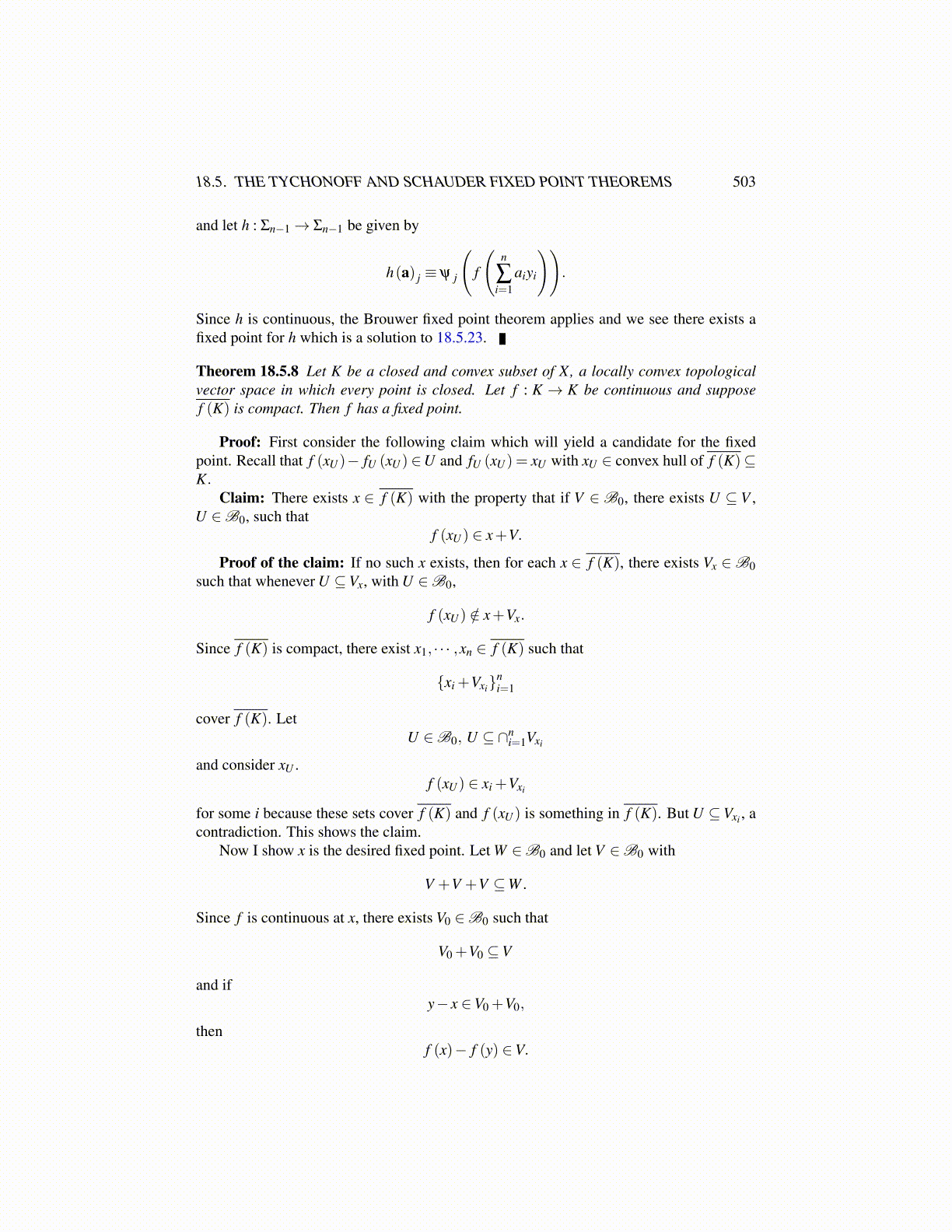
18.5. THE TYCHONOFF AND SCHAUDER FIXED POINT THEOREMS 503
and let h : Σn−1→ Σn−1 be given by
h(a) j ≡ ψ j
(f
(n
∑i=1
aiyi
)).
Since h is continuous, the Brouwer fixed point theorem applies and we see there exists afixed point for h which is a solution to 18.5.23.
Theorem 18.5.8 Let K be a closed and convex subset of X, a locally convex topologicalvector space in which every point is closed. Let f : K → K be continuous and supposef (K) is compact. Then f has a fixed point.
Proof: First consider the following claim which will yield a candidate for the fixedpoint. Recall that f (xU )− fU (xU ) ∈U and fU (xU ) = xU with xU ∈ convex hull of f (K)⊆K.
Claim: There exists x ∈ f (K) with the property that if V ∈B0, there exists U ⊆ V ,U ∈B0, such that
f (xU ) ∈ x+V.
Proof of the claim: If no such x exists, then for each x ∈ f (K), there exists Vx ∈B0such that whenever U ⊆Vx, with U ∈B0,
f (xU ) /∈ x+Vx.
Since f (K) is compact, there exist x1, · · · ,xn ∈ f (K) such that
{xi +Vxi}ni=1
cover f (K). LetU ∈B0, U ⊆ ∩n
i=1Vxi
and consider xU .f (xU ) ∈ xi +Vxi
for some i because these sets cover f (K) and f (xU ) is something in f (K). But U ⊆Vxi , acontradiction. This shows the claim.
Now I show x is the desired fixed point. Let W ∈B0 and let V ∈B0 with
V +V +V ⊆W .
Since f is continuous at x, there exists V0 ∈B0 such that
V0 +V0 ⊆V
and ify− x ∈V0 +V0,
thenf (x)− f (y) ∈V.